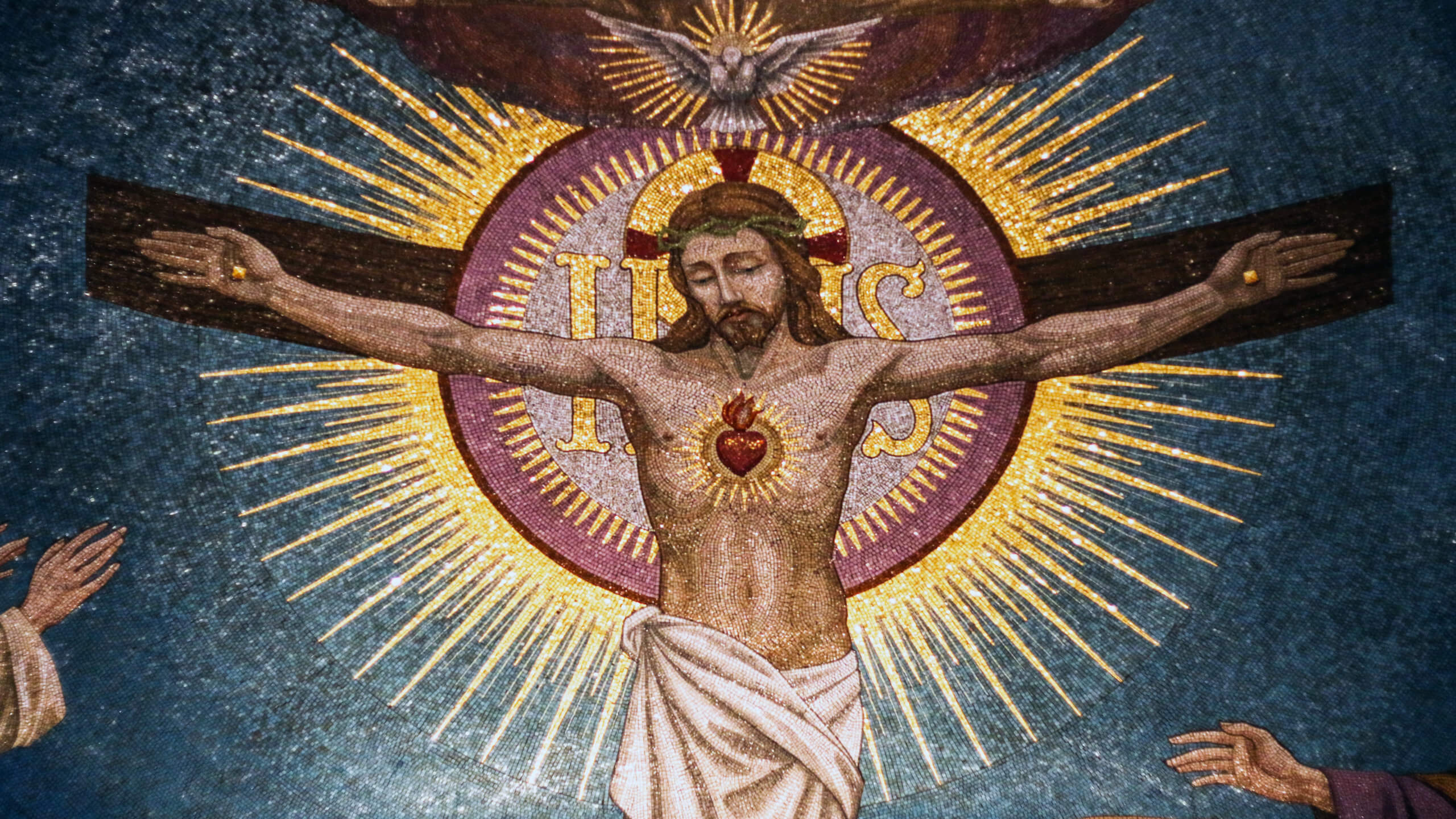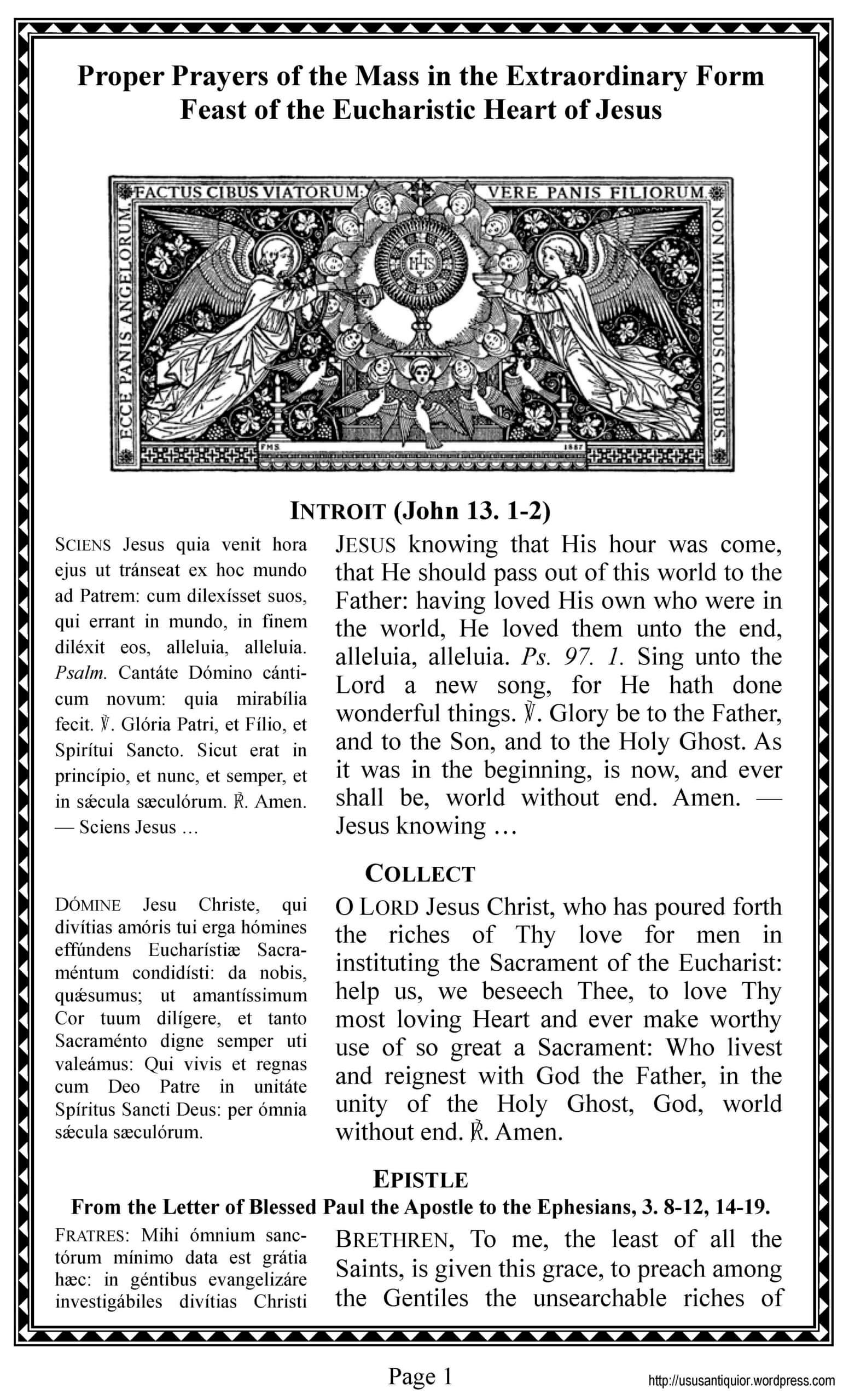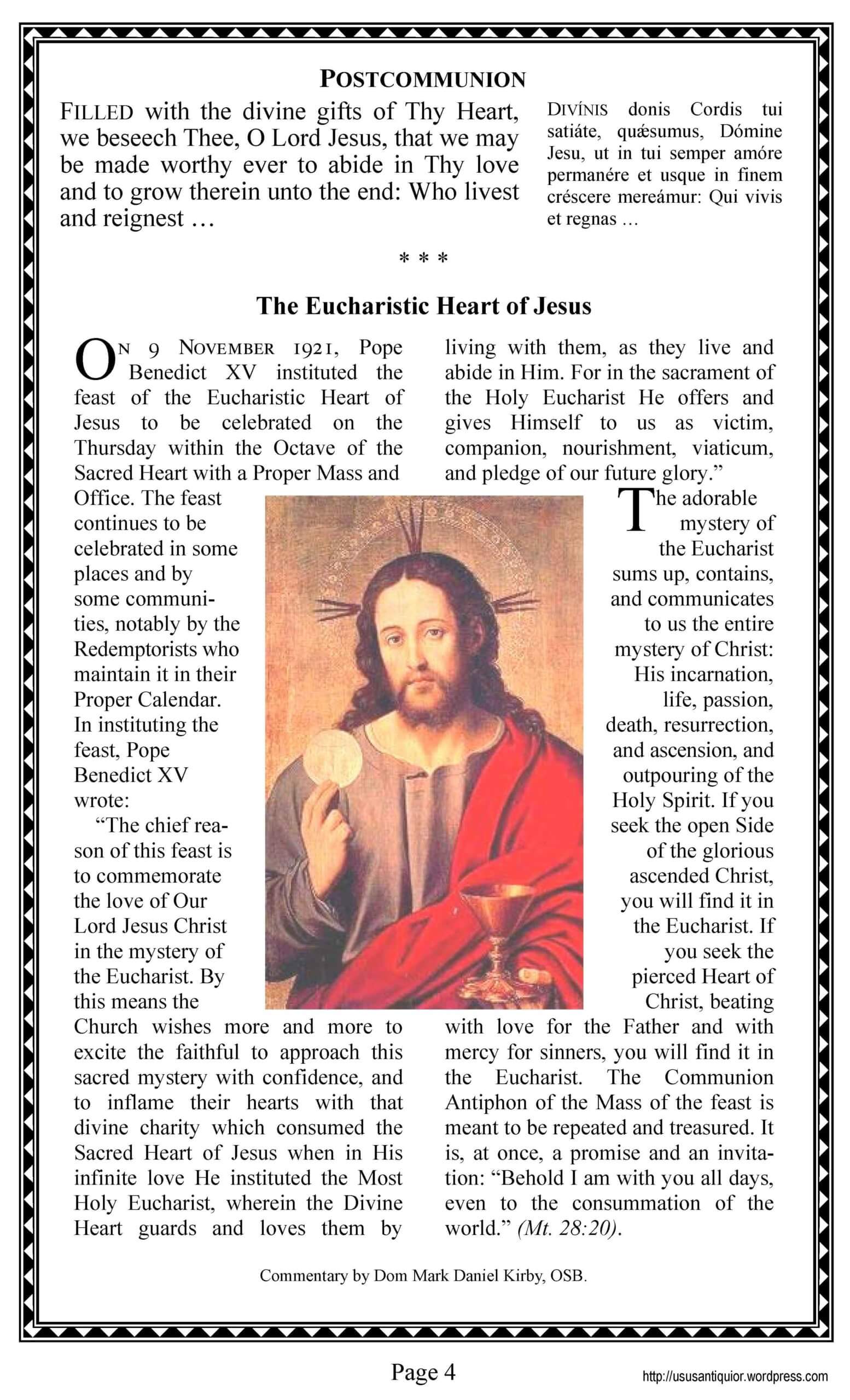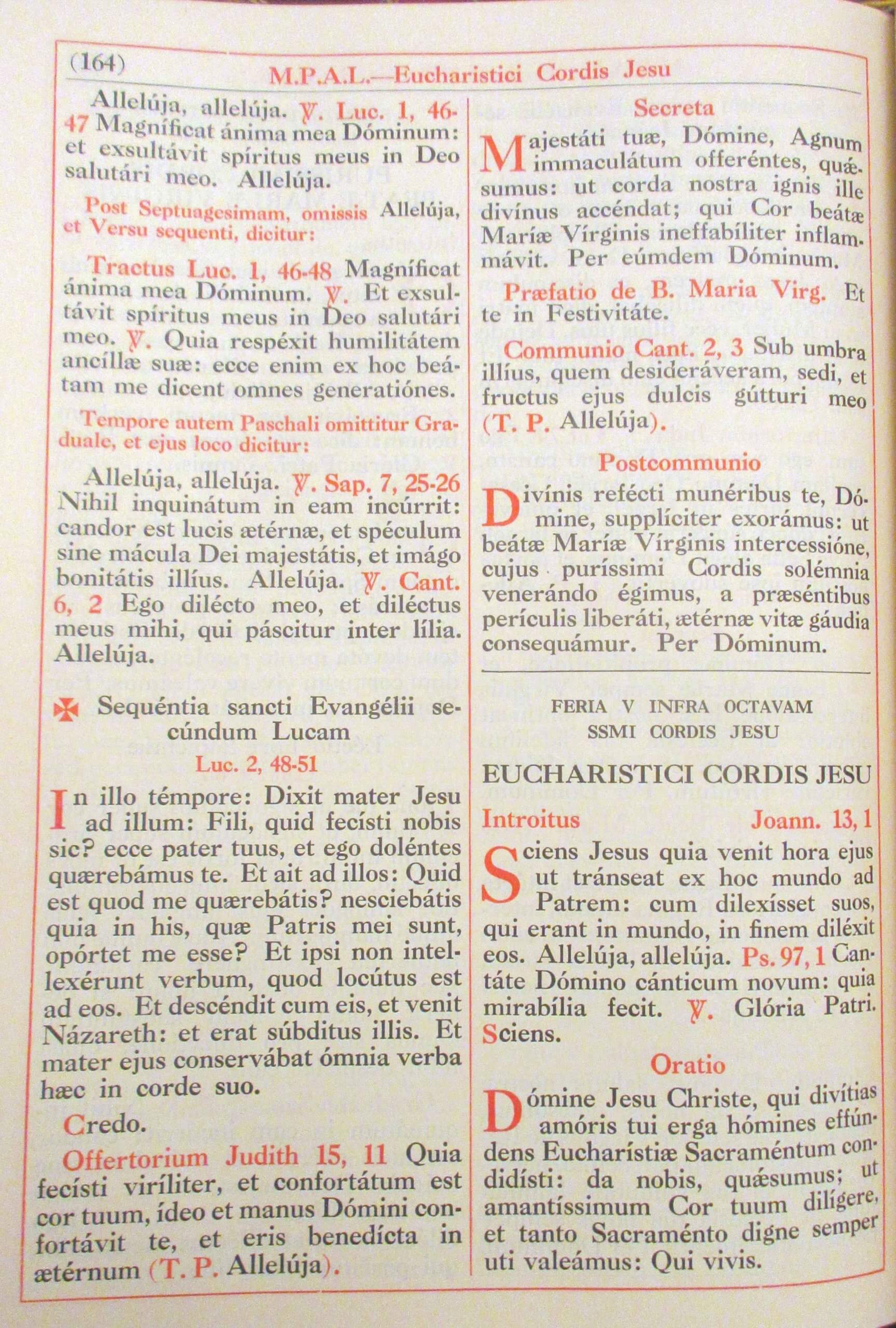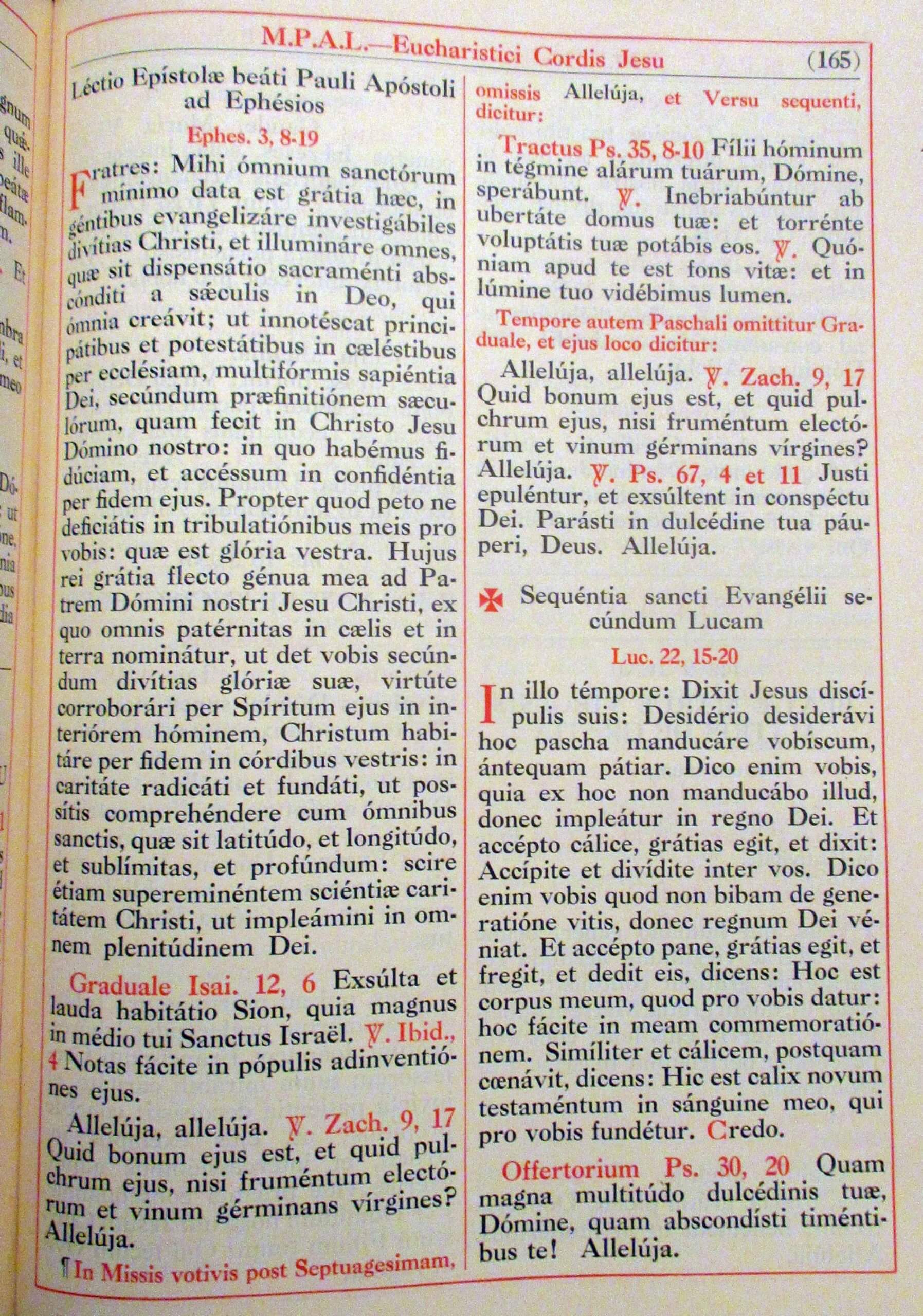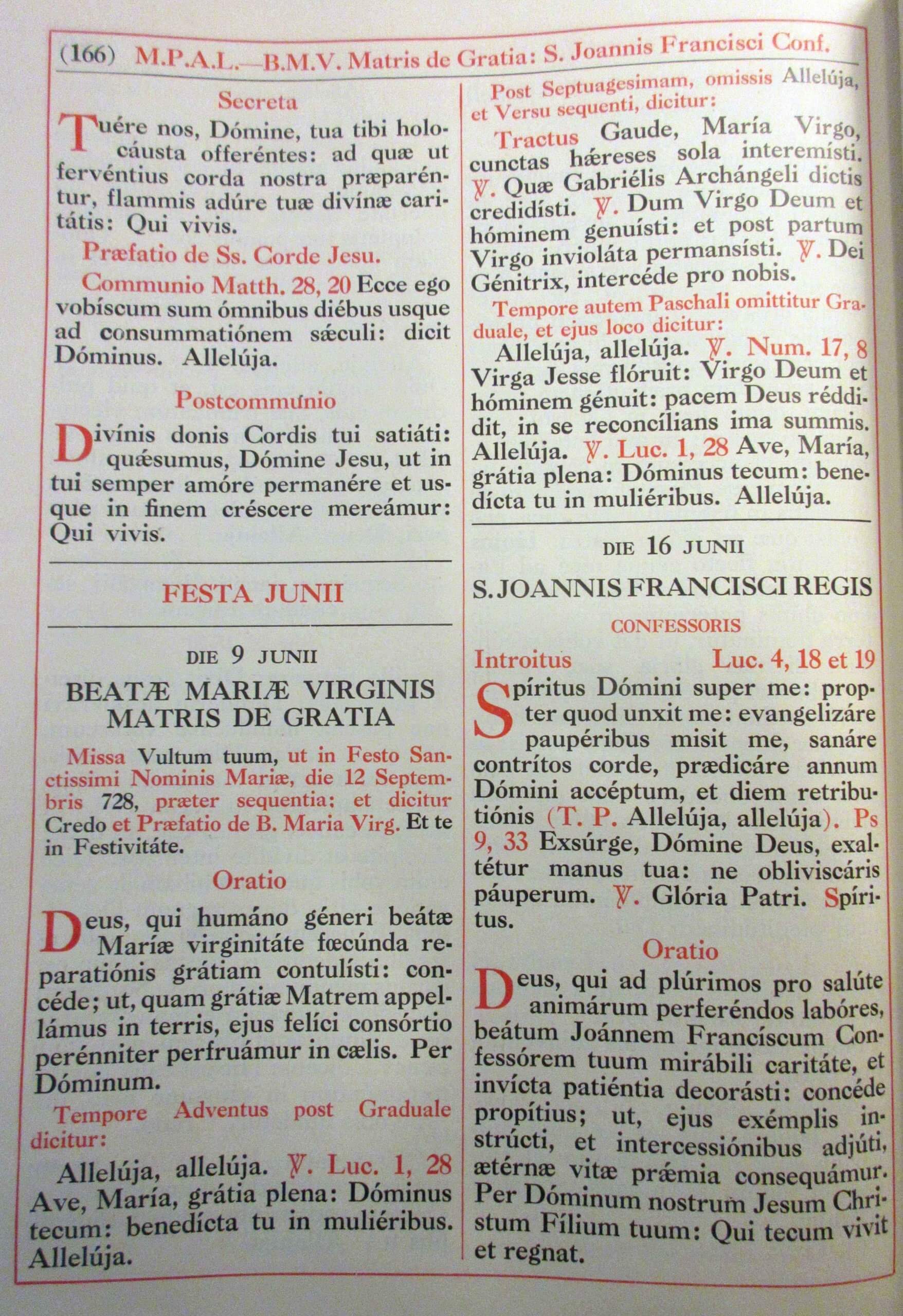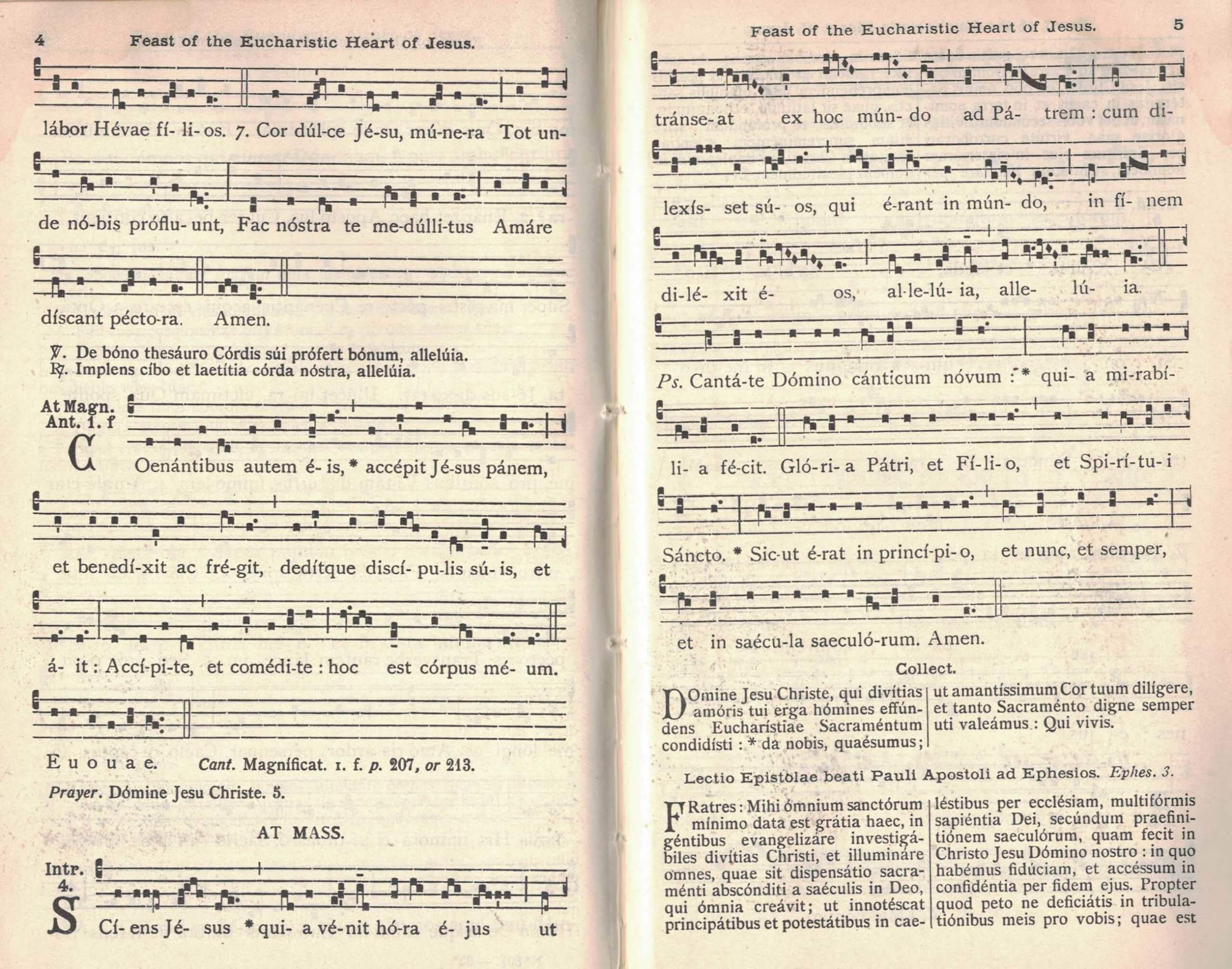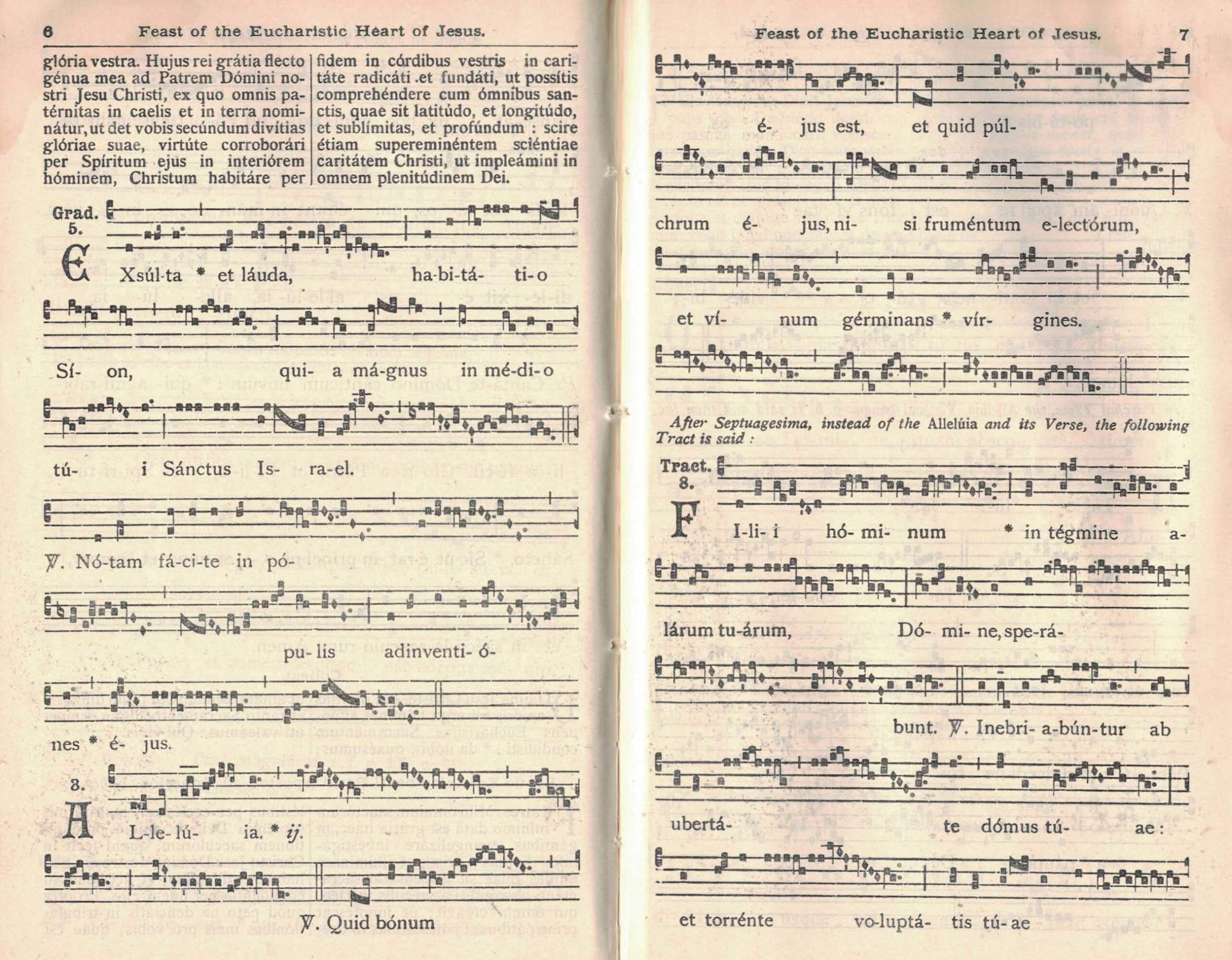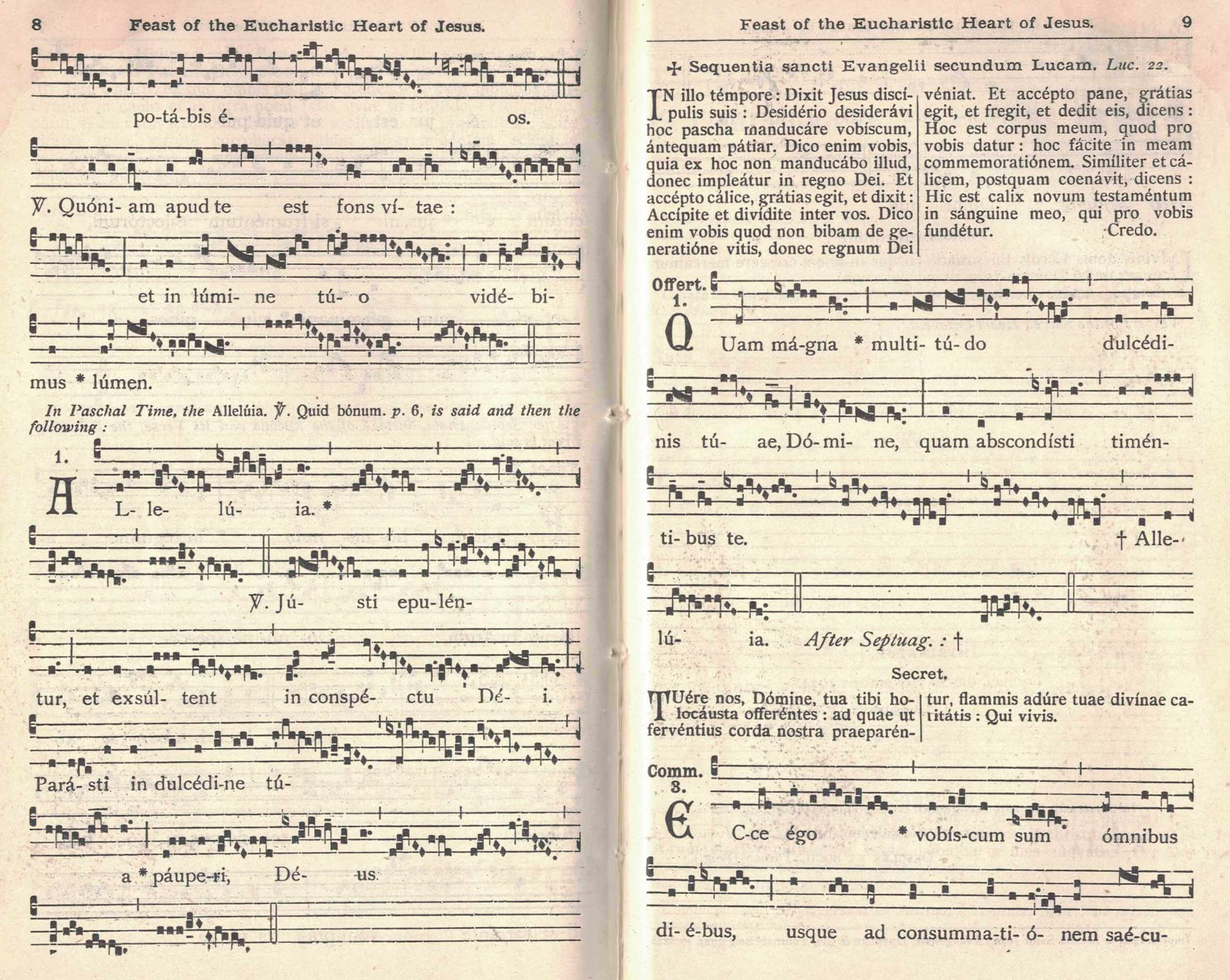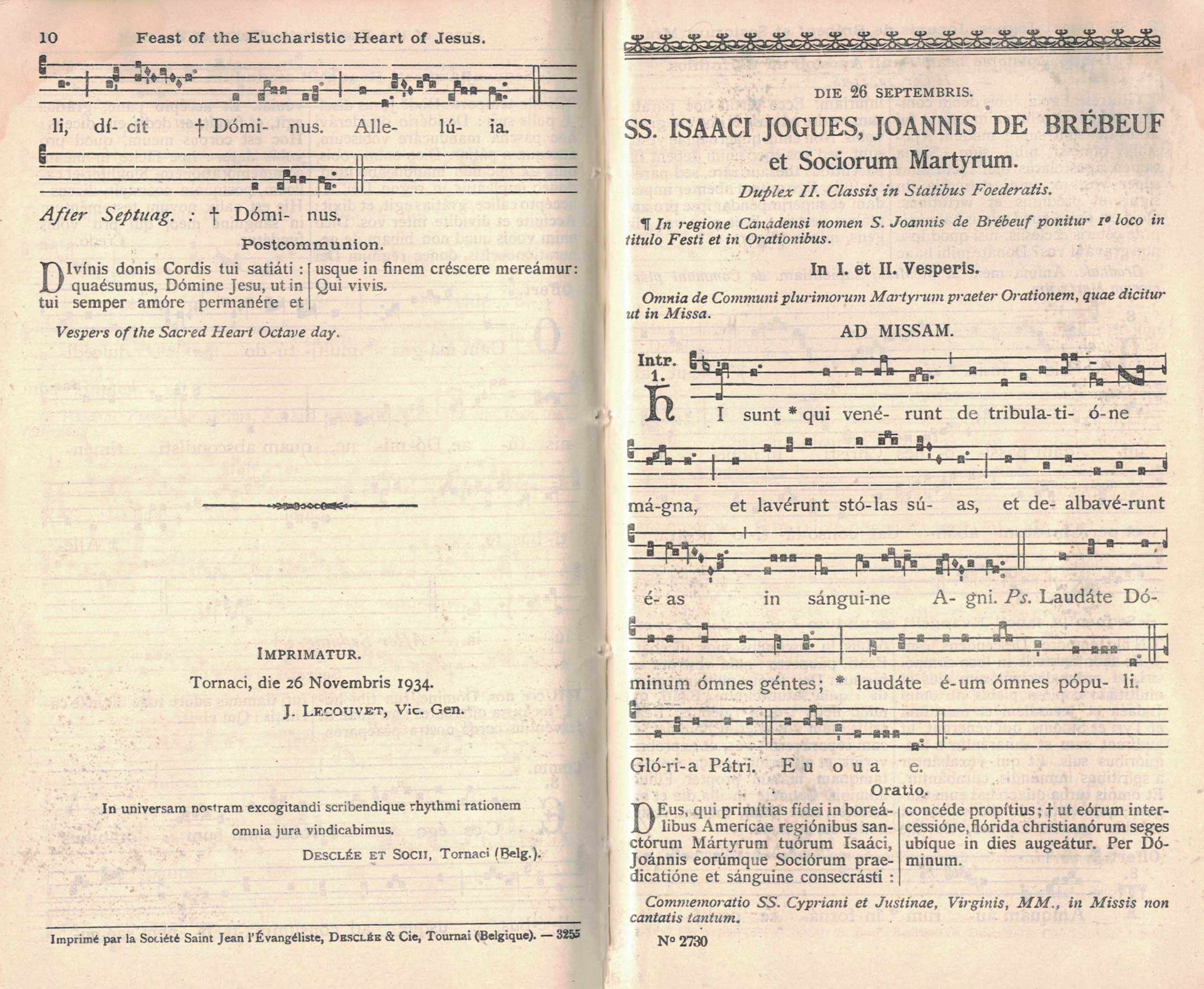If you have ever shown up early to church and found yourself quietly paging through your hand missal—let’s say, a Saint Andrew Daily Missal reprint from 1945—you might have stumbled across a section of Mass formularies that may be unfamiliar owing to the rarity of their use.
Some of these will be identified as Votive Masses, like the Mass of the Passion of Our Lord, Mass for the Removal of Schism, Mass for the Forgiveness of Sins, or Mass for a Happy Death. How I wish our priests would use these votive Masses more often!
Still others may be called “Feasts Kept in Some Religious Congregations and in Some Places” or “Local Feasts,” such as St. Joan of Arc on May 30, the Most Pure Heart of the Blessed Virgin Mary, SS. John Fisher and Thomas More on July 9, St. Peter Claver on September 9, Saints John de Brébeuf, Isaac Jogues, and Companions on September 26, or, intriguingly, Feast of the Holy Relics Preserved in the Churches of the Diocese on November 5. St. John Nepomucene on May 16, St. Rita of Cascia on May 22, the Commemoration of All Holy Popes on July 3 or July 4 (dates vary), and Our Lady of the Miraculous Medal on November 27 would be further examples.
Older missals may have still more exotic Masses, such as the Mass of the Holy Face of Jesus, the Mass of the Sacred Lance and Nails, the Mass of the Five Holy Wounds. Some of these could be used by any priest, while others would require special permission. The missal was once filled with these profound “devotional” Masses, which (needless to say) the rationalist progressivist liturgists hated. “So medieval! So pietistic! So unbiblical! So…”
All one has to do is study these Masses prayerfully to see how foolish and harmful is this ideological rejection. They are, in fact, profoundly scriptural, profoundly Catholic—but in the vein of the Council of Trent, in the vein of liturgical-sacramental mysticism. Perhaps this is why they were rejected.
At this time of the liturgical year, when Holy Mother Church is celebrating, at the behest of the Lord Jesus Himself, the feast of the Most Holy Body of Christ (Corpus Christi), we find one such unique Mass that deserves to be revived in our times: the Feast of the Eucharistic Heart of Jesus, observed on the Thursday within the octave of the Sacred Heart—that is, the penultimate day of the octave.
This feast was instituted just over one hundred years ago, on November 9, 1921, by Pope Benedict XV. Its Propers—antiphons, prayers, readings, even, it seems, a Preface—are exquisitely beautiful, rich in material for meditation. For those who have a St. Andrew Daily Missal, the Mass is found on p. 1840. For convenience, I have included here the pages from a 1952 altar missal printed in New York, as well as the Liber Usualis pages at the bottom of this article.
Given what I said above, no one will be surprised to hear that this Mass, with thirteen others like it, was removed from the 1962 missal by way of a decree issued on February 14, 1961, in the wake of the new 1960 code of rubrics of John XXIII. (The full story is told here.) The reasons given for the suppression are as weak and dubitable as one might imagine. One notes with a sense of relief, however, that even the 1961 decree makes exceptions for “truly special reasons.” Now, that’s my kind of open-ended concept! The truly special reason today is that we are living in a period of extraordinary desacralization that begs for an increase in the devotion paid to the mysteries of Our Lord, Our Lady, and the saints. Moreover, Benedict XVI has given us the “sacred and great” principle.[1] Such devotional Masses need no extrinsic justification for their revival. They are justified by their authoritative introduction, by their history of use, and by their intrinsic content: justificata in semetipsa. Moreover, one might add that the Liber Usualis frequently included the chants for the feast of the Eucharistic Heart even after 1961, and, moreover, that the Baronius Missal, which is, if anything, excessively 1962ish, also includes the propers for it (see p. 1752). One discerns here the distinct marks of the sensus fidei fidelium.
Meanwhile, in Wonderland, the US Bishops have announced a “National Eucharistic Revival” from 2022–2025. This bureaucratic effort, which will involve a 28-million-dollar Eucharistic Congress, is doomed to fail as long as the underlying causes of habitual Eucharistic indifference and disbelief—namely, Communion given in the hand to people queuing up in line, Communion given by non-ordained ministers, and automatic Communion for everyone, including outspokenly pro-abortion politicians—remain unaddressed.
And these evils cannot be undone until their underlying cause is addressed, namely, a form of Mass totally inadequate in its rubrics and subject to the ad libitum choices of its celebrants. That is why, when 2025 comes around, the statistics will show the same depressing results as they did before; except that it can be safely predicted that more Catholics than ever will be assisting at TLMs. That is where the Eucharistic revival planned by Divine Providence is taking place and will continue to take place.
What is needed is not glitzy packaging, synodal processes, sharing and caring, slick YouCats, and the rest of the all-too-human solutions in which the USCCB specializes. What is needed is both more challenging and more readily available: a renewed plunge into the mystical depths of the Most Holy Eucharist by means of the traditional liturgical rites of the Church, together with Eucharistic reparation for sins committed against the Lord in the Most Blessed Sacrament. This reparation, after all, was the reason Our Lord requested, via St. Margaret Mary Alacoque, a special feast the day after the octave day of Corpus Christi, which is what we now call the Feast of the Sacred Heart.
The treasury of our Catholic Faith is already full to overflowing with all the means of reparation and renewal. Let us not sit around lamenting that wicked men have tried to take these treasures away; instead let us rise up and be proactive in recovering them.
This post originally published June MMXXII.
Photo by Fr. Lawrence, OP.
[1] “What earlier generations held as sacred, remains sacred and great for us too, and it cannot be all of a sudden entirely forbidden or even considered harmful. It behooves all of us to preserve the riches which have developed in the Church’s faith and prayer, and to give them their proper place.” (Letter Con Grande Fiducia that accompanied Summorum Pontificum of July 7, 2007; this articulates a matter of truth, not a matter of mere discipline.)

